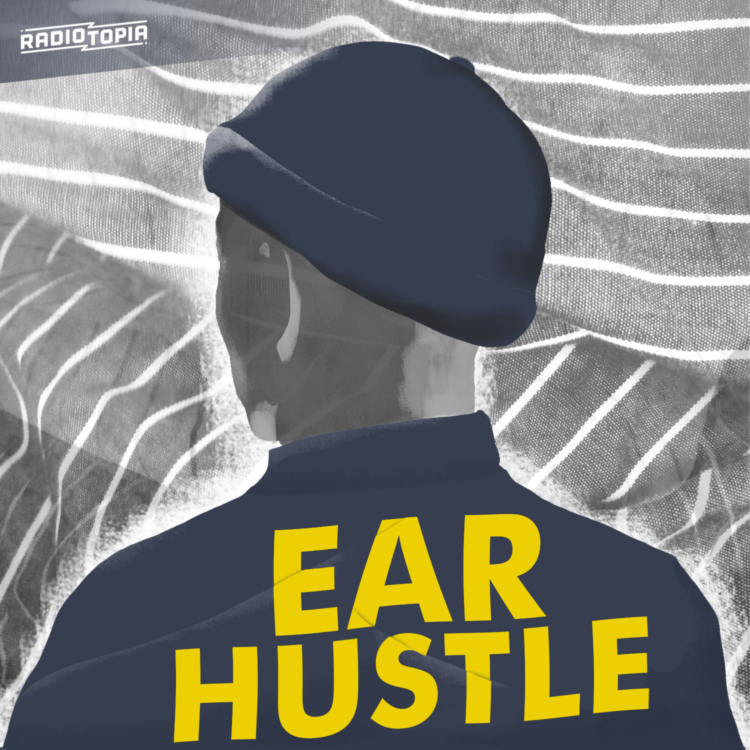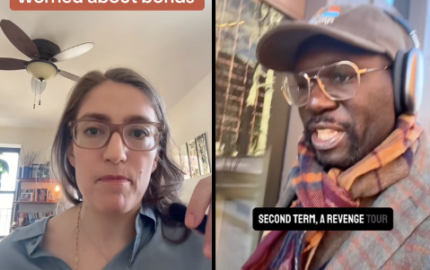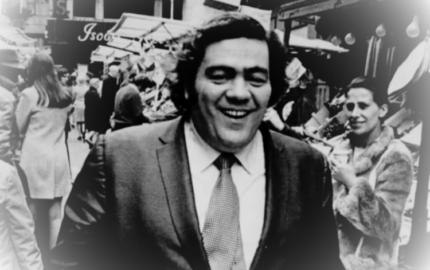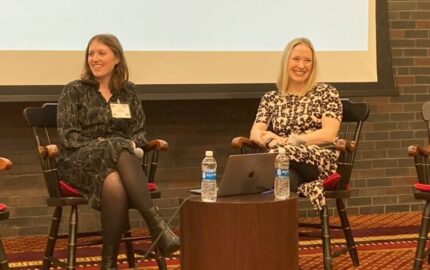EDITOR’S NOTE: “The Best Audio Storytelling: 2022” is a newly released audiobook compendium of English-language nonfiction. The collection’s curator, Julia Barton of Pushkin Industries, spoke with creators of work in the collection about their storytelling choices and challenges. This is the final of four posts that revive “Audio Danger,” Barton’s Storyboard series on podcasting published a decade ago. Her recent pieces update the status of podcasting as a journalistic form, analyzes a podcast that takes us inside the Jan. 6, 2021, assault on the U.S. Capitol and features an investigation of abuses at indigenous schools that won both a Pulitzer Prize and a Peabody Award.
Every type of documentary storytelling has a built-in tension between the need to plan — to prepare questions for interviews, plan shot lists, script narration — and the need for the kind of spontaneity and openness that results in great moments on tape. Now imagine a documentary podcast produced mostly inside a prison, requiring coordination with the warden’s communications officer. You’d think that would result in a show that’s even more tightly planned — and sounds like it. But the secret brilliance of “Ear Hustle,” the award-winning production of PRX’s Radiotopia, is that it always finds ways to sound fresh and surprising, despite its origins in the media lab at San Quentin State Prison (soon to be revamped as San Quentin Rehabilitation Center) north of San Francisco.
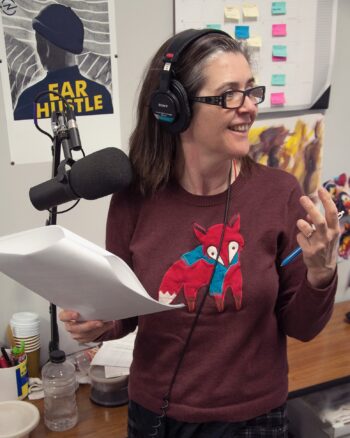
I reached out to the producers of “Ear Hustle” to talk about their recent episode “Last Memory: Ryan and Earlonne.” Both that episode and the one that precedes it, “Last Memory: Michael,” are poetic explorations of the memories that incarcerated people carry with them: memories of their last days on the “outside.”
“For me the idea of these stories was thinking about how memory works and how photography works,” says co-host Nigel Poor, who’s also a visual artist. “Telling stories through pictures or through the spoken word is about trying to capture something that’s quite elusive.”
Both episodes in the “Last Memory” series start with the producers trying to track down an exact location, but getting a little lost. “The idea was to go to an ordinary place where something extraordinary happened,” Poor says. “Something traumatic or life-transforming happened there.”
A story subject as trusted co-host
In 2018, California’s then-governor Jerry Brown commuted the sentence of “Ear Hustle’s” co-host, Earlonne Woods. But he hadn’t been back to the intersection in Lawndale, in greater Los Angeles, where he was arrested on December 27, 1997. Woods, his co-host, and “Ear Hustle’s” executive producer Bruce Wallace drive to the fateful location as Woods tells the story of that day. He and his friends were, he says, “up to some nefarious activities.” They wound up on a high-speed chase from cops, a chase that ended in a car crash. The police opened fire, wounding Woods and killing his best friend, Furman Little.
Woods relates all to his co-host as they sit in the car near the intersection decades later. Poor asks him to recall the last thing he saw of his friend. “His hand,” Woods says. Then the conversation veers in a surprising direction: a dream Woods once had in prison about his dead friend:
“He was in heaven, and he told me he was writing R&B songs and shit. I couldn’t compute that, but it was just good to just see him and talk to him, you know what I’m saying? And even though it was a dream, it was just something that I held onto for years.”
It’s in moments like these that you hear how “Ear Hustle” is built on trust between the co-hosts. Even though this memory is clearly painful, Woods is able to laugh about his dream. Poor and Woods say they don’t script out their interactions in the field or in the studio. They may have outline in mind, but they’d rather sacrifice the efficiency of scripted narration than to give up the spontaneous flow of conversation.
The atmospheric scoring fades out after Earlonne Woods relates the story of his dream, followed by a few seconds of silence. Then we are introduced to someone entirely new: the second character of the episode, Ryan Pagan. Nigel Poor interviews him inside San Quentin, where he talks about his last memory, having one last dinner with his family at Applebee’s before he began his 72-years-to-life sentence for first-degree murder.
The unnarrated transition from Woods’ story to Pagan’s could be jarring, but this is an episode that signaled from the start that it was going to be a bit “untethered,” as Nigel Poor puts it.
Trusting listeners to follow the threads
“‘Ear Hustle’ is a show where a lot of times we have two pieces of tape from two unrelated people, but just the proximity of them illustrates a thread that is hopefully clear enough that you don’t actually have to (explain) it,” says the show’s editor, Amy Standen. “The listener just intuits it.”
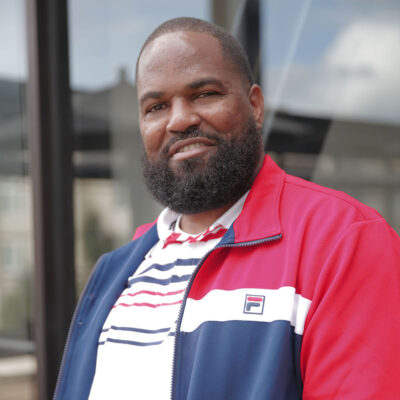
That thread becomes clear as the episode continues: These last memories, preserved in amber after incarceration, are filled with pain and regret. They mark the place in time where mistakes and bad ideas became irrevocable, and where the life of these men diverged permanently from the lives of their families and loved ones.
“Ear Hustle’s” co-hosts go to visit Pagan’s father and sister, who reminisce about him before his life took a terrible turn. The two still live in the house where he grew up. Then Nigel Poor returns us to San Quentin, where she asks Pagan if he wants to know what she (and also we) have heard about his mother, who recently passed away. He agrees, and so Poor relates the story that his mother would cry herself to sleep, years after his incarceration. Pagan reacts by saying. “I felt it.” The interview goes on:
Ryan Pagan: “When I would think about her, I knew that she was thinking about me. I never really fully processed her passing and I think it’s because I’m so far removed from out there, it hasn’t really hit me. And I still think that she’s there. There’s a lot of happiness, and there’s a lot of pain in that house. Part of me doesn’t want to go back. And then, part of me does.”
Nigel Poor: “Does it almost just seem like another world in a completely different orbit?”
Ryan Pagan: “Yeah, it seems a whole different — you’re right, a different planet. I hate that version of me. I associate that version with the house, with that area.”
It’s here that you feel the full force of the rupture that crime and incarceration bring. But the episode isn’t done with us yet. Soon we are back in Lawndale, the site of co-host Earlonne Woods’ last memory. He’s been shot in the back, and yet he’s still running, determined to get rid of the handgun in his waistband. He throws it through a window in a nearby house.
More from Audio Danger revived
In the podcast’s final scene, Woods and his team go looking for that house. And after some persistence, they find it and its owner, the same man who decades earlier ducked for cover when gunshots erupted outside. Then, he recounts in a slight Spanish accent, a handgun broke through his window, its laser-finder pointed right at him.
“Good thing it didn’t go off,” he chuckles.
Woods tells the man that he was the one who threw the gun. He relates how his sentence was eventually commuted, and how he started a podcast about life inside and outside of prison. Then he pays the man back for the damaged window. We listen as the remarkable scene unfolds — as a new story starts to overwrite at least a part of the difficult memory set here.
Then Nigel Poor asks the man, “Why were you so nice? Why did you talk with us?”
He says, simply, “It’s my nature.”
His generosity and simple kindness comes as an emotional gut-punch after the fraught stories we’ve heard from both Ryan Pagan and Earlonne Woods. But there’s no way the team could have planned this moment. They simply went to the scene with open minds, then trusted that listeners would hear this episode, and its interwoven stories, with open minds as well.
* * *
Julia Barton is the executive editor of Pushkin Industries, following a long career in public radio. She helped develop “Revisionist History” and “Against the Rules,” among other chart-topping shows.
